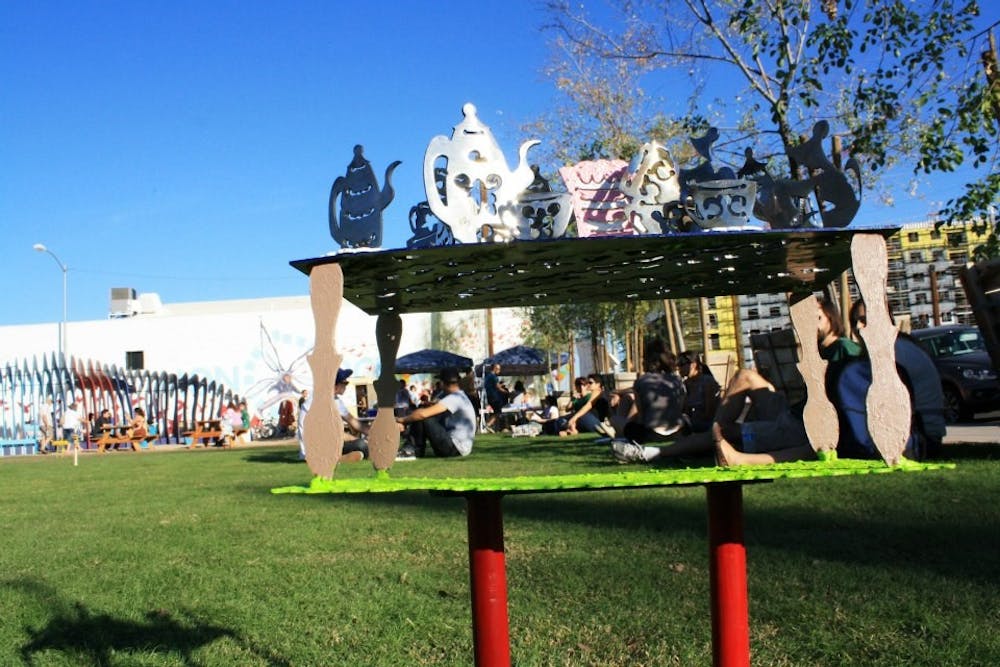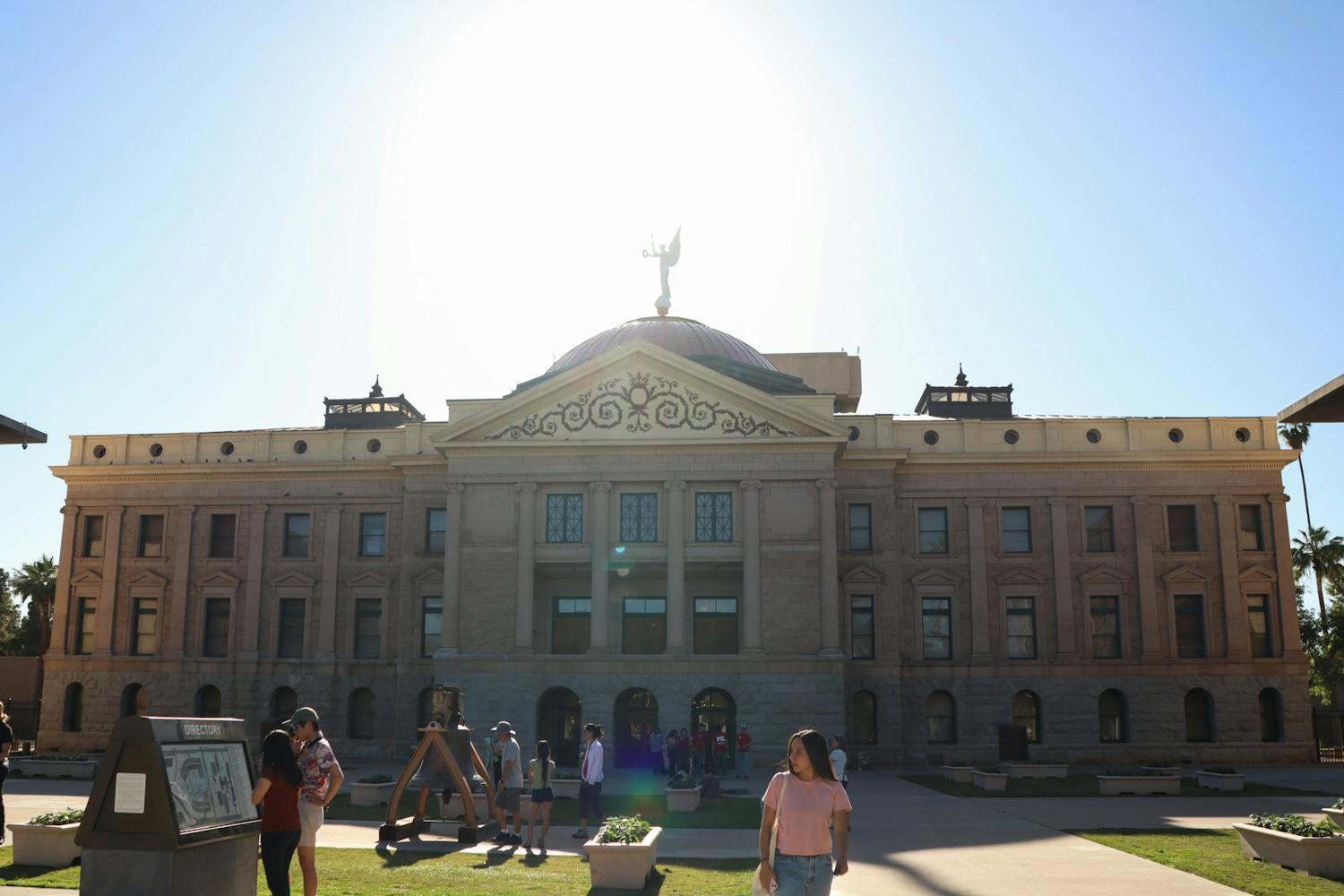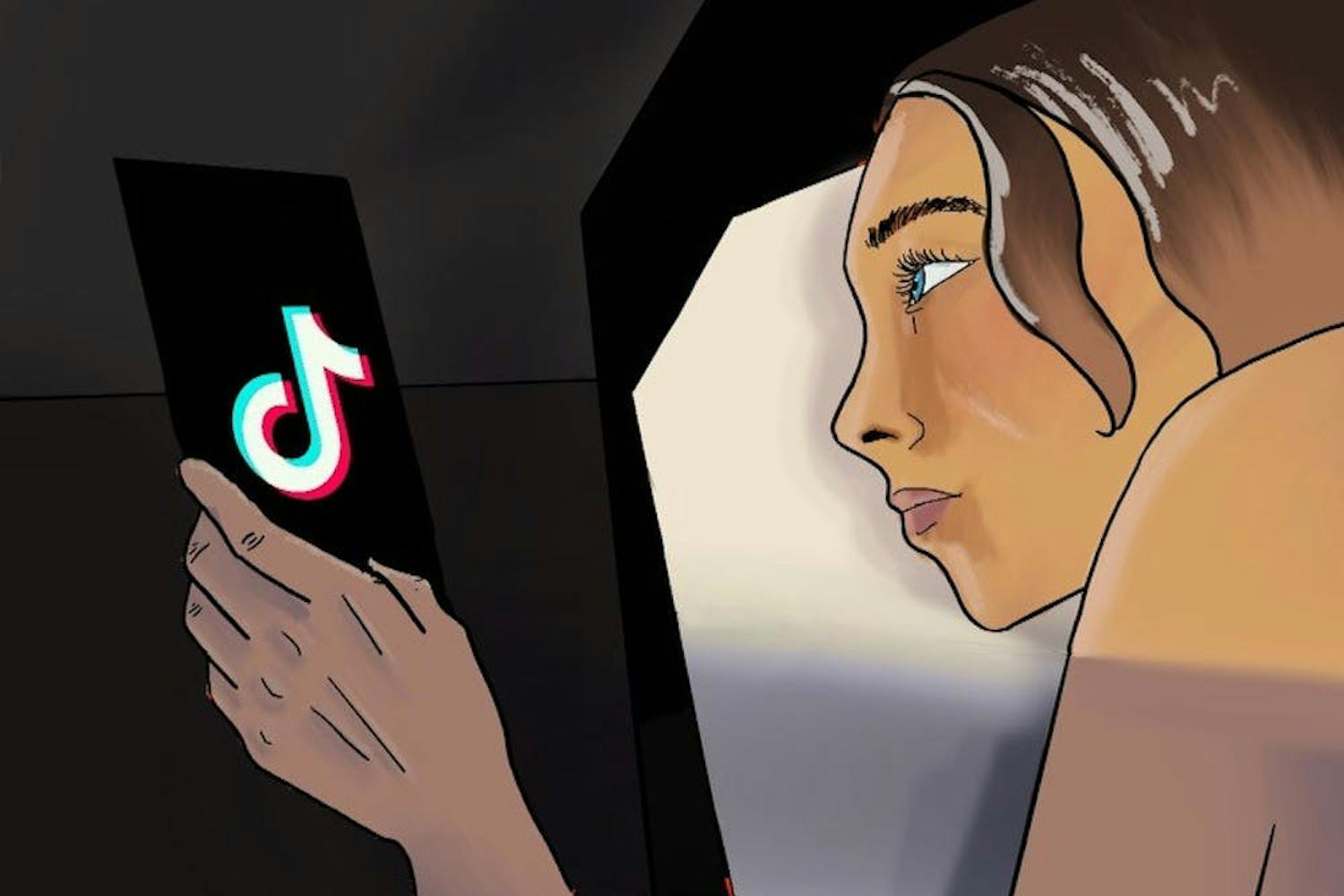Pie and art lovers united at this year’s Chow Bella and Roosevelt Row Pie Social, a whimsical and delicious wonderland that offered a little something for everyone: sweet treats, croquet, vintage clothing and music by a local act.
After filling up on unique and quirky pies like pear and ginger, blackberry and blue cheese crumble, and banana cream pie with warm bananas on top, attendees were encouraged to try their hand at a game of croquet. Festival-goers also stopped to admire the intricate design and detail of the wickets used in the game - the work of several members of the ASU Sculpture Society.
Intended to be slightly less cutthroat than the Queen’s game in the classic novel by Lewis Carol, the wickets themselves inspired as much awe and magic as Alice experienced in Wonderland.
The theme of Alice in Wonderland, a collective decision by the sculpture club, was set because of its familiarity to a wide audience and the plethora of visual characteristics the artists could easily interpret with their wickets. Using a variety of sustainable mediums, all of them recycled or reused, the sculptors depicted various scenes from the many Alice in Wonderland movies and of course the book.
Roy Cárdenas recreated the classic scene in which Alice falls in a perpetual spiral down the rabbit hole.
“I really like working with paper, so I worked with paper to make some origami butterflies. I used wood, metal and polymer clay. I sculpted Alice out of [polymer clay] and it spins. It doesn’t spin on its own, but you can articulate it. You can make it move,” Cárdenas says.
 Cárdenas articulated Alice's fall into the rabbit hole with subtle hints of his love for Japanese art, while attendees, like Alice, fell for the pies baked by local celebrity chefs.
Cárdenas articulated Alice's fall into the rabbit hole with subtle hints of his love for Japanese art, while attendees, like Alice, fell for the pies baked by local celebrity chefs.Photo by Noemi Gonzalez
The tea party scene fascinated Amy Gochoel for its intrigue, mystery and the madness of the Mad Hatter. Aiming to finish the sculpture relatively quickly, Gochoel chose to work with steel and the plasma cutter, which is controlled with a computer program. In actuality, the project ended up taking much longer than expected despite her prior experience with steel.
 Gochoel sculpted the tea party scene from Alice in Wonderland making it out of steel and love for the Mad Hatter.
Gochoel sculpted the tea party scene from Alice in Wonderland making it out of steel and love for the Mad Hatter.Photo by Noemi Gonzalez
Kelly Wilton’s Cheshire Cat is a combination of a head made of clay and a body molded out of paper-mache. Performing one of his infamous disappearing acts, the cat's tail is molded into a mischievous spiral, creating the effect of a fading body. The entirety of the piece is covered in black and royal blue fur.
Focusing on the color and texture of the Caterpillar, Jaime Cordelier used epoxy bondo, a type of putty that sets and hardens, and wood filler for a two-part mold.. She incorporated light into her piece with a UV backlight in one of the mushrooms and attempted to emulate the Caterpillar’s hookah smoke by creating air vents for simulated smoke to pour out of, but due to the size of the wicket, the vents were deemed too small for the effect to work properly.
 Cordelier used the caterpillar as a source of inspiration, focusing on the use of color and light.
Cordelier used the caterpillar as a source of inspiration, focusing on the use of color and light.Photo by Noemi Gonzalez
Topping it off with a mushroom to compliment Cordelier’s mushroom and caterpillar piece, Sutton Demoong designed the stake at the end of the game out of basswood.
Drawing influence from Carol’s fictional insect the Bread-and-Butterfly, Kyle Blalock got a loaf of bread and plastered each piece of bread into butterflies.
 Blalock took the butterflies from the wonderland story and manifested them out of bread loafs.
Blalock took the butterflies from the wonderland story and manifested them out of bread loafs.Photo by Noemi Gonzalez
“Doing the Alice in Wonderland theme allows us to delve into the realm of public work where we don’t have to be as academic and conceptual, so it allows us to have more fun and relate to the public, which is also an aspect of the sculpture world,” Blalock says.
Viewing the pie social as an opportunity to bring fine art sculpting to the public’s attention, the sculptors aimed to expose their audience to both materials and textures that they normally would never get to experience. Not only is the imaginative world of Alice a perfect theme for creativity, Gochoel says the theme is approachable to all ages.
“They understand it’s Alice in Wonderland,” Gochoel says.
 The sculptors say they tailored their art for kids to be presented to the sculpture world through the world of Alice.
The sculptors say they tailored their art for kids to be presented to the sculpture world through the world of Alice.Photo by Noemi Gonzalez
Drawing from his own childhood love for Japanese culture, Cárdenas incorporated the origami butterflies into his sculpture, allowing him to incorporate his past into his present.
Demoong hopes the audience will draw from their own childhood experiences like Cárdenas and get some kind of nostalgia from the wickets, “even just the freedom that comes from playing when you’re a kid” because he believes that it’s a prevalent theme in Carol’s books.
The pie social itself was enough to cause a wave of nostalgia to pass over the attendees with its vivid colors, giggling kiddos and the smell of pie forming a gentle haze over the families sprawled out on the croquet lawn. A mini wonderland in downtown Phoenix, Chow Bella owes its dream-like perfection to Alice in Wonderland, and the ASU Sculpture Society for adding an element of madness to the event.
Reach the writer at lily.lieberman





